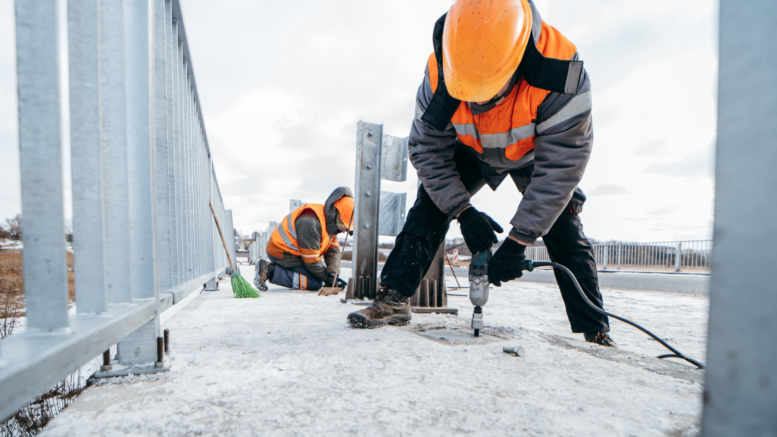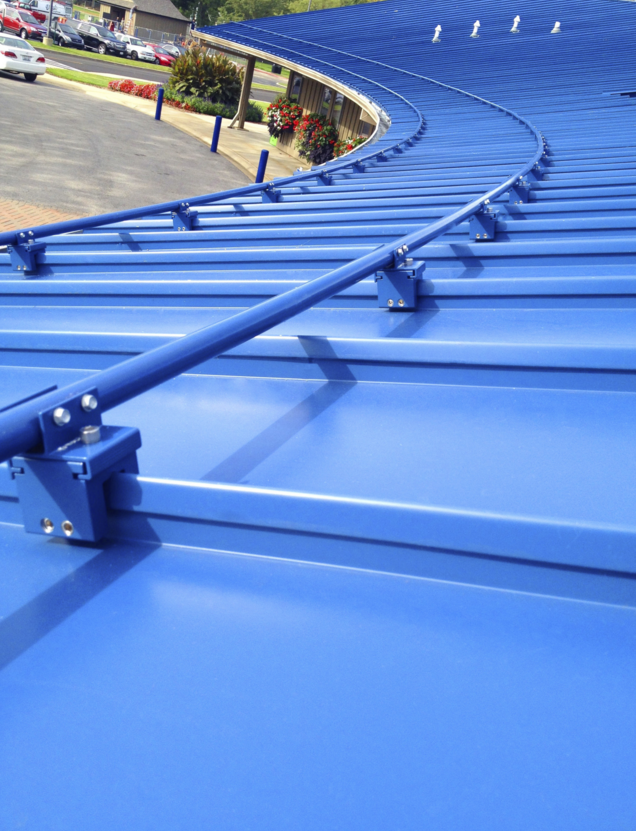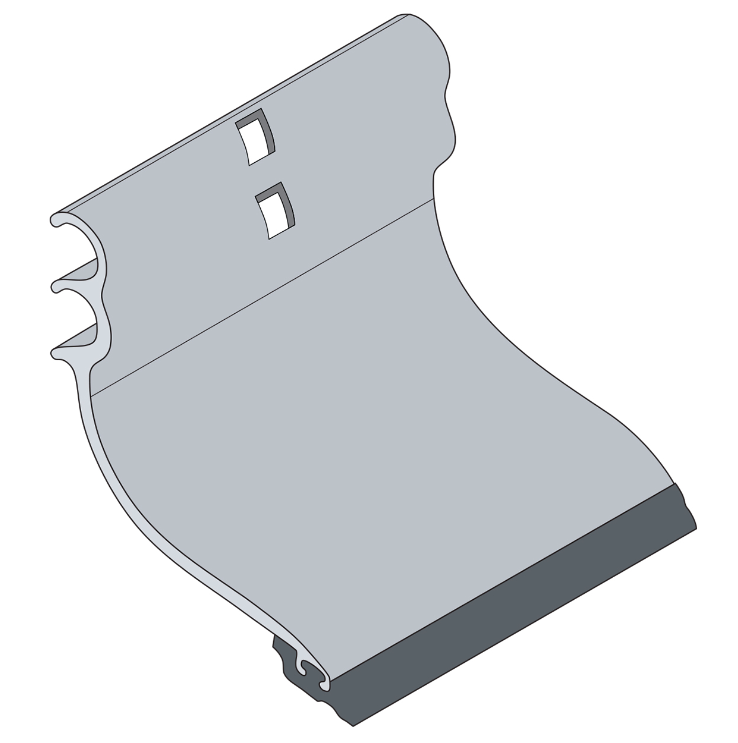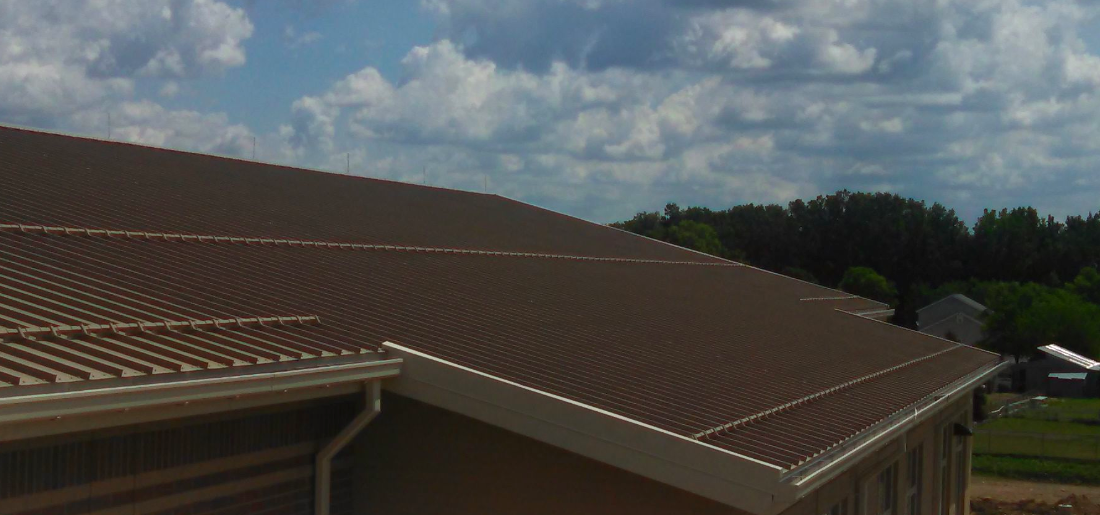It’s a big country and much of it is pretty cold this month. In many areas, roofing work and replacements have been put on hold until spring weather breaks. Most manufacturers of shingles and roofing adhesives recommend that they be applied at 40 degrees Fahrenheit and above. Adding to winter’s inconveniences, traveling to the worksite can be impacted by snow or ice. Winter’s cold, wet weather makes roofers dream of spending the season on a desert island with a pina colada in hand.
There are plenty of good reasons to postpone roofing installations or repairs during the winter months, but sometimes there’s no choice and work must proceed. Here are a few things to remember about roofing in the cold and snowy months.
Don’t Rush It
Working in cold weather means bulky clothing. Lungs and hearts must work harder to keep up the pace. Normally agile team members may feel clumsy and be more prone to dropping tools or bumping into pallets of materials. Encourage crew members to dress in breathable layers with one wind resistant component. Hats and gloves add extra protection from cold and wind. Project leaders must resist the temptation to push forward to get the same amount of work done with fewer hours of sunlight per day. When it’s cold and damp, you simply need more time during all stages of the project.
Snow Is Heavy
Shoveling snow is athletic and tiring work. If workers need to clean vehicles before heading to the jobsite, or remove snow laden tarps covering materials, they are already expending energy before the real work begins. Allow extra time and give frequent breaks in a warm vehicle or heated area.
Mark Your Edges
Freshly fallen snow may look beautiful but can hide deadly hazards such as skylights. Roof edges may be invisible when viewed against highly reflective snow on the ground. Be sure to use clearly visible rails and/or flags around hazards. Take extra care with ladder positioning and be sure everyone who ascends a roof uses adequate fall protection gear.
Be Alert for Medical Hazards
No one on the crew wants to be the first person to complain about the cold. But hypothermia and frostbite are sneaky enemies that target outdoor workers across many industries. It’s important to understand that even moderately low temperatures such as 40 to 45 degrees can cause hypothermia if clothing is wet from snow, rain, or even sweat (remember those breathable layers). Be prepared to combat hypothermia and frostbite by storing blankets on the trucks and having warm liquids available onsite.
Hypothermia
Hypothermia is defined as an abnormally low body temperature caused by extended exposure to cold temperatures. Humans first respond to dropping temperatures by shivering because muscle contractions generate heat. Continued cold exposure leads to slurred speech and signs of clumsiness such as fumbling hands or loss of agility. These symptoms are soon accompanied by exhaustion, confusion, and drowsiness.
Hypothermia is a medical emergency that should not be ignored. Call 911 for an ambulance and move the victim to a warm location such as inside a truck, van, or heated building. Remove wet clothing, if feasible. Cover the worker with blankets and wrap head in a hat or other covering. Warm, non-alcoholic drinks will be helpful. However, never give food or liquids to a semi-conscious or unconscious person.
Frostbite
Frostbite is another common cold-related injury to skin exposed to very cold temperatures and particularly on windy days. Symptoms include loss of color and feeling in exposed skin, often affecting fingers, toes, face, and ears. If not promptly reversed, frostbite can cause permanent damage, and in extreme cases, lead to the need for amputation. Be aware that frostbite can occur even through gloves or shoes, particularly if dampness next to the skin is present.
Frostbite’s early signs include skin redness and pain which proceed to numbness in the exposed area. Affected skin can appear white, gray, or yellowish and become hard or even have a waxy look due to loss of circulation in that area. Persons experiencing frostbite may be unaware of the seriousness of the situation because of loss of feeling. Team members need to be alert for these signs in others when working outdoors in the cold.
Frostbitten skin can be treated by moving the victim to a warm area and covering the affected skin with clean, dry materials such as blankets or towels. A common myth is that frostbite can be handled by applying hot water or a heating pad, or even by rubbing the affected area with snow. Frostbitten skin must be treated gently to prevent further tissue damage. Never apply hot liquids or materials to skin with frostbite. Never rub or massage frostbitten skin. Always seek medical attention for skin that has become discolored or appears firm or waxy.
The CDC advises that preparation is the best way to avoid medical emergencies due to cold temperatures. Limit working hours in cold conditions; make sure that warming areas and warm, drinkable liquids are available. Encourage workers to wear cold-appropriate clothing and ensure that harnesses and other safety equipment are adjusted for the extra layers. Trainers and site supervisors should remind crews that cold weather is challenging and can be dangerous if taken lightly. Stay warm and stay safe.
About the author: Brandon Strawder is CEO of Strawder Family Innovations, parent company of The RidgePro, the premium device in steep-slope roofing safety. The company’s mission is to dramatically reduce the number of injuries and fatalities in the roofing industry. For more information, visit theridgepro.com.






Be the first to comment on "Avoid Medical Emergencies Due To Cold Temperatures"